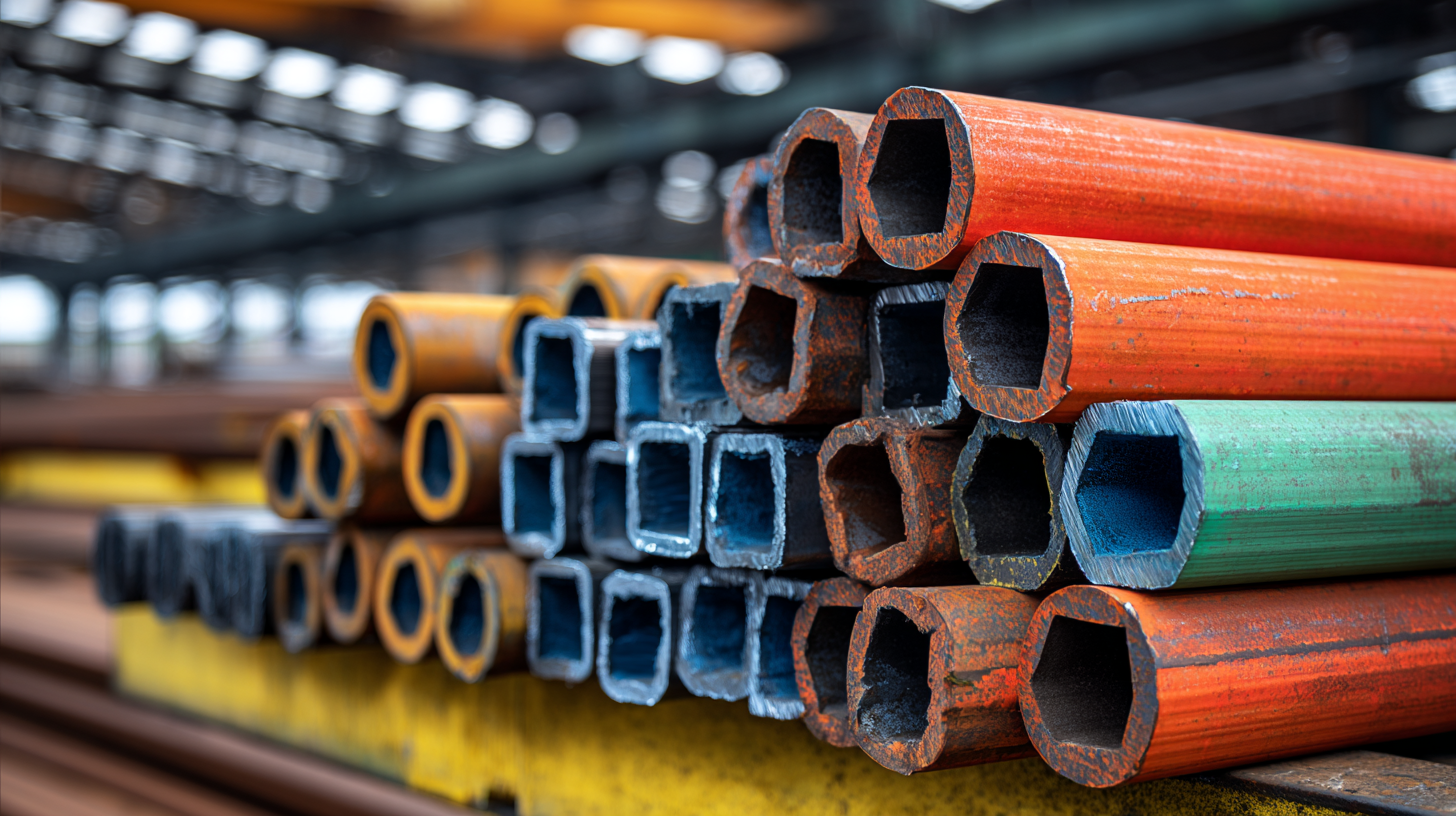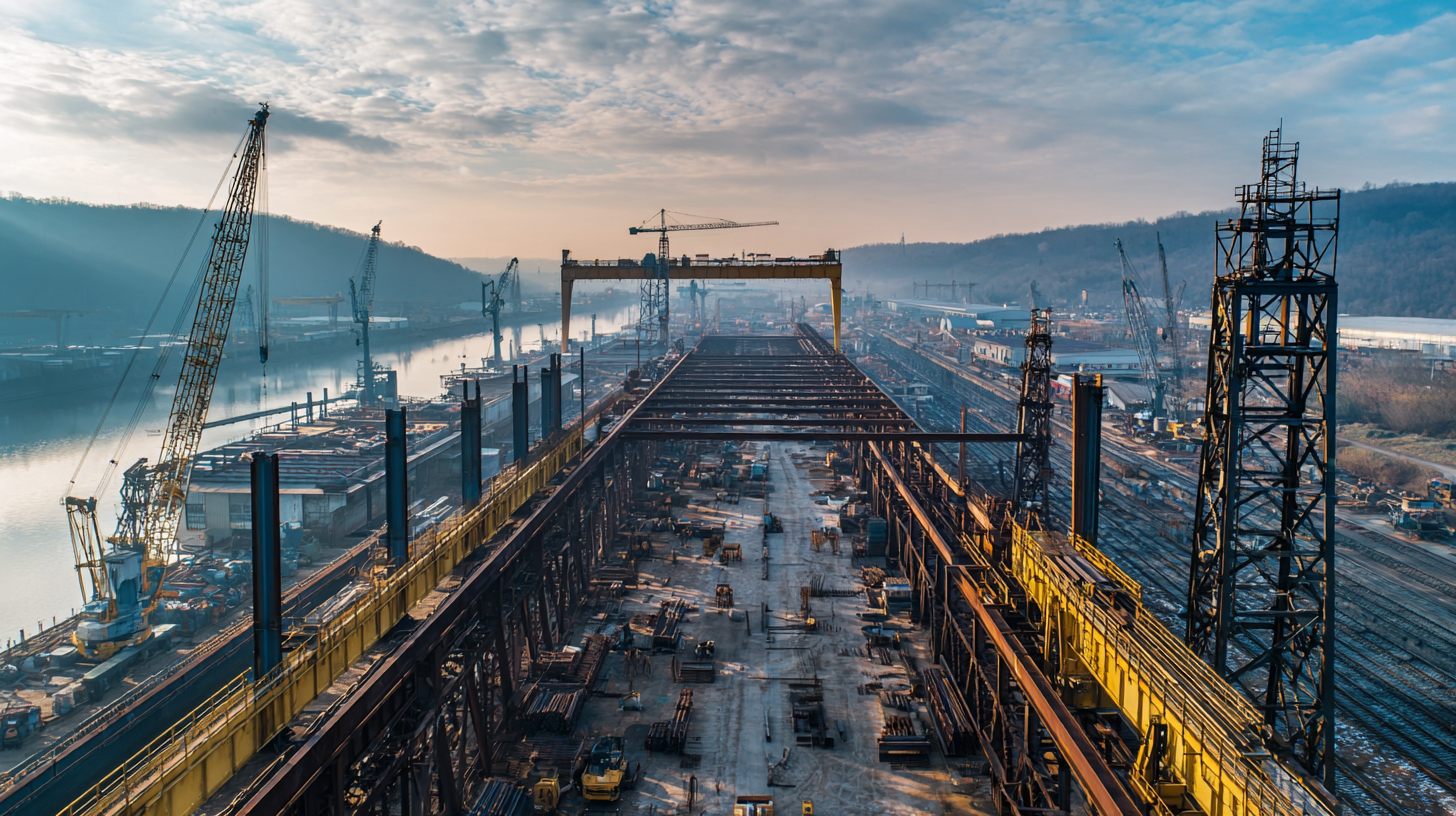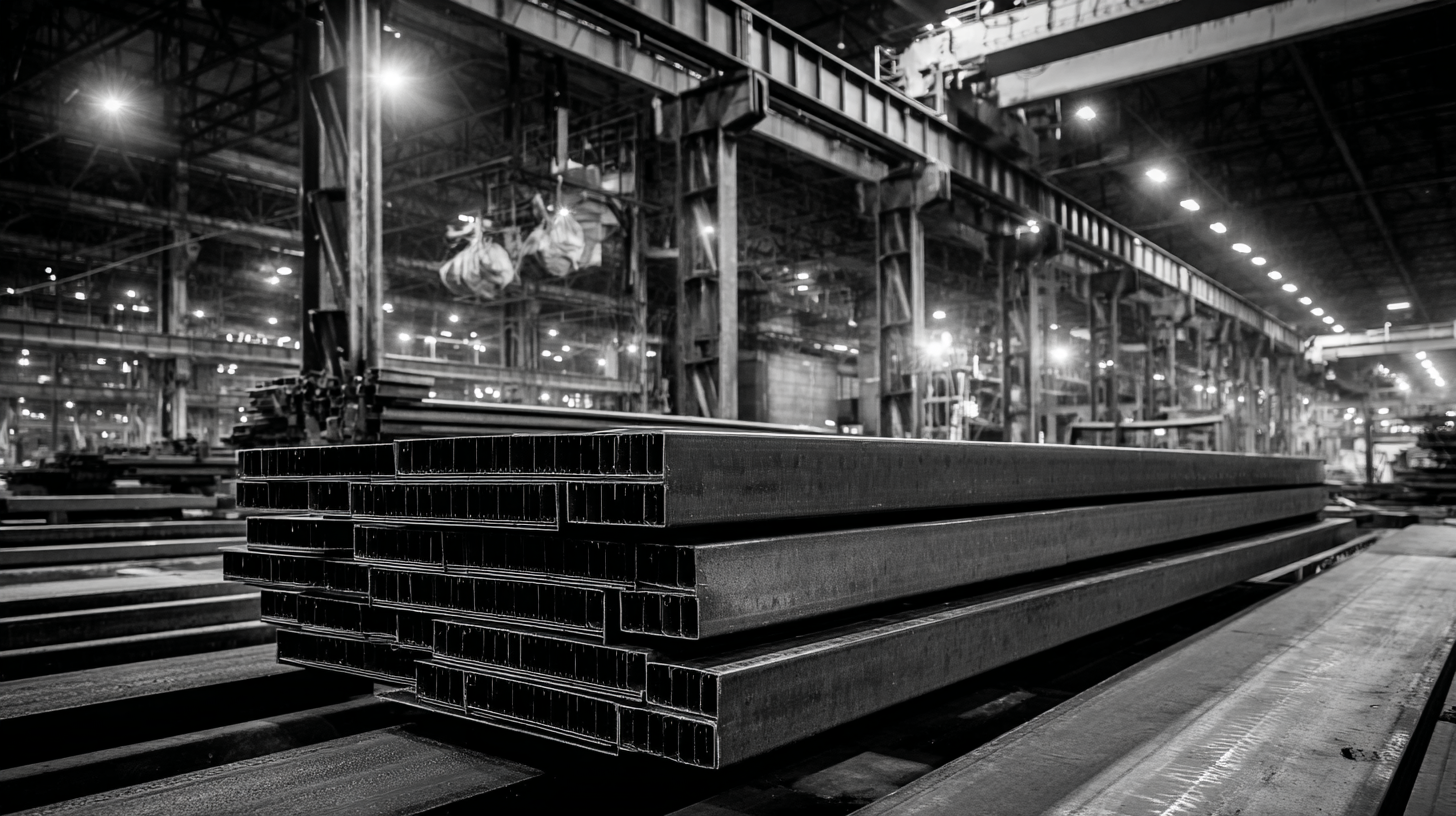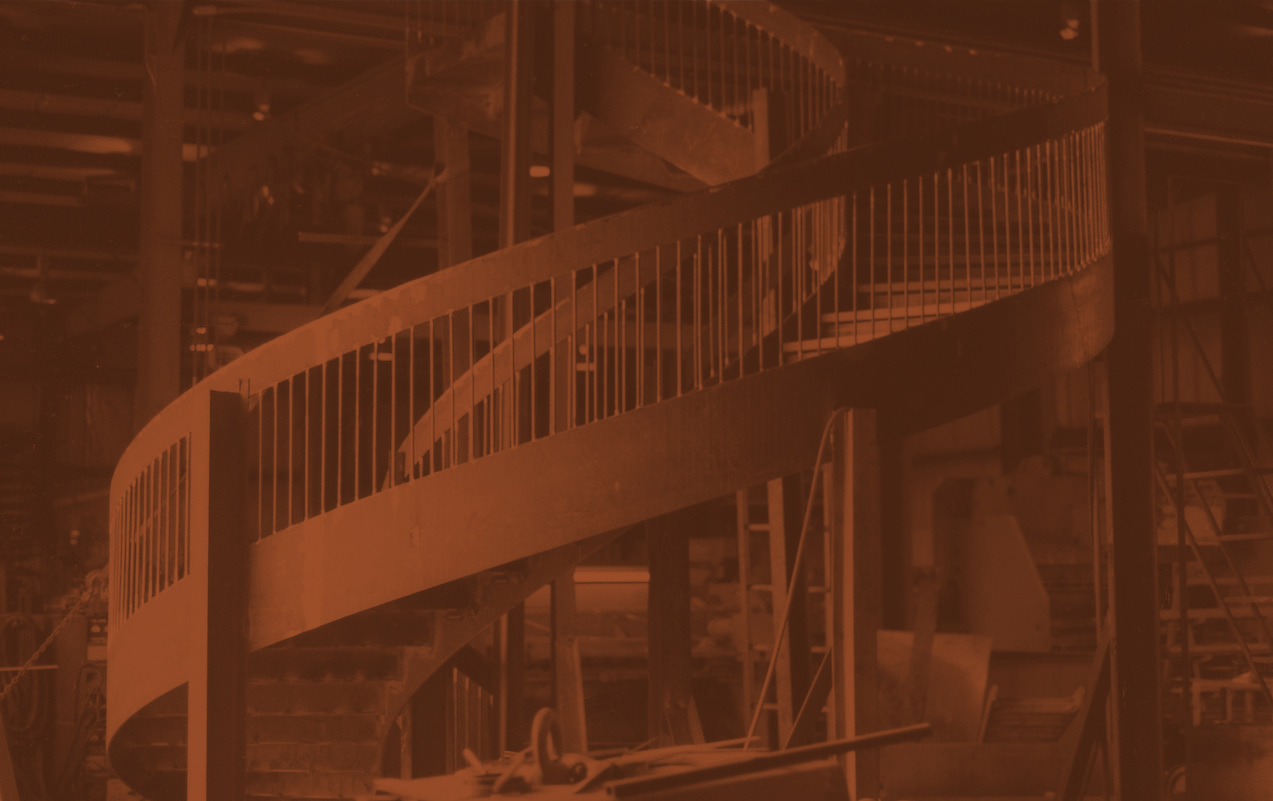





The landscape of structural steel fabrication is undergoing a remarkable transformation driven by technological innovations and evolving industry demands. According to a recent report by Mordor Intelligence, the global construction steel market is projected to reach $210 billion by 2025, with structural steel fabrication playing a pivotal role in this growth. Advanced methods such as Building Information Modeling (BIM) and automation are reshaping how projects are designed and executed, enhancing efficiency and accuracy. Additionally, the integration of green technologies and sustainable practices is not only responding to regulatory pressures but also aligning with the industry's shift towards environmentally friendly solutions. As companies adopt these innovations, structural steel fabrication is set to become more versatile and efficient, paving the way for smarter buildings and infrastructure. This article will explore the key innovations transforming the structural steel fabrication industry and how they are reshaping the future of construction.

Innovative technologies are rapidly reshaping the structural steel fabrication industry, driving efficiency and enhancing the precision of processes. The integration of advanced robotics and automation systems stands at the forefront of this transformation. These technologies not only streamline repetitive tasks but also reduce human error and improve overall safety on the shop floor. With robotic welding and cutting machines, fabricators can achieve higher accuracy and consistent quality in their components, leading to significant time and cost savings.
Furthermore, the adoption of Building Information Modeling (BIM) has revolutionized project planning and execution. By enabling detailed visualization and coordination, BIM helps fabricators anticipate challenges, optimize material use, and minimize waste. This collaborative approach fosters improved communication among architects, engineers, and fabricators, ensuring that the final product adheres to both design specifications and regulatory demands. As these innovative technologies continue to advance, the future of structural steel fabrication promises increased productivity and sustainability in building practices.

The future of structural steel fabrication is increasingly influenced by advancements in automation and robotics. As the industry evolves, these technologies are redefining efficiency and cost-effectiveness, transforming traditional manufacturing processes. The integration of robotic welding systems streamlines operations, significantly reducing the time required to complete projects. This shift not only enhances productivity but also minimizes human error, leading to higher quality outputs and overall improved safety in the workplace.
Moreover, the global market for robotic welding is poised for remarkable growth, with projections indicating an increase from $8.1 billion in 2025 to an impressive $20.16 billion by 2032, reflecting a compound annual growth rate (CAGR) of 13.9%. This expansion underscores the increasing adoption of automated solutions among steel fabricators seeking competitive advantages. By investing in robotic technologies, companies can optimize their fabrication processes, reduce labor costs, and respond more effectively to market demands, solidifying their position in a rapidly evolving industry landscape.

The steel fabrication industry is undergoing significant transformation through the adoption of sustainable practices that prioritize environmental responsibility. One of the key trends is the incorporation of green materials, which reduces the carbon footprint associated with traditional steel production. Innovations such as high-strength recycled steel and bio-based binders are gaining popularity, enabling manufacturers to create robust structures while minimizing resource consumption and waste. This shift not only addresses environmental concerns but also aligns with consumer demand for sustainable construction solutions.
Recycling remains a crucial aspect of modern steel fabrication, with many companies implementing closed-loop systems to reclaim and reuse materials. This process not only conserves energy but also reduces the need for new raw materials, contributing to a more circular economy. Furthermore, advancements in technology, such as automated sorting and advanced processing techniques, improve the efficiency of recycling operations, making it easier for fabricators to integrate recycled content into their projects. By embracing these sustainable practices, the structural steel fabrication industry is not only enhancing its environmental stewardship but also positioning itself for future growth in a market increasingly focused on sustainability.
In the realm of structural steel fabrication, advanced software solutions play a pivotal role in revolutionizing workflows and enhancing operational efficiency. According to a report by MarketsandMarkets, the global construction software market is projected to grow from $1.89 billion in 2020 to $3.14 billion by 2025, emphasizing the increasing reliance on technology in the industry. These software systems help streamline production processes, automate tedious tasks, and improve project management, allowing fabricators to deliver high-quality products within tighter timelines.
Furthermore, the integration of Building Information Modeling (BIM) and computer-aided design (CAD) software has transformed how steel fabrication is approached, providing real-time collaboration and precise project visualization. A study published by McKinsey & Company indicates that digital project delivery methods can increase productivity by up to 30%. As fabricators adopt these technological advancements, they can minimize errors and enhance communication among stakeholders, leading to significant cost savings and improved project outcomes. Embracing these innovations prepares the industry for future challenges and propels structural steel fabrication into a new era of efficiency and precision.
| Innovation Area | Description | Impact on Fabrication | Estimated Adoption Rate (%) |
|---|---|---|---|
| 3D Modeling Software | Allows for precise digital representations of steel structures. | Increases accuracy in measurements and reduces material waste. | 75% |
| Cloud-Based Collaboration | Facilitates real-time data sharing among stakeholders. | Enhances communication and speeds up decision-making processes. | 60% |
| Automated Cutting Systems | Utilizes CNC technology for precise cutting of steel. | Reduces labor costs and improves cutting accuracy. | 50% |
| BIM Integration | Integrates Building Information Modeling for enhanced planning. | Improves project visualization and coordination among teams. | 70% |
| Robotic Fabrication | Employs robots for tasks such as welding and assembling. | Increases efficiency and reduces human error. | 40% |
As the structural steel fabrication industry evolves, the demand for a skilled workforce capable of adapting to new technologies becomes increasingly critical. The advent of innovations such as advanced robotic fabrication and digital modeling presents exciting opportunities but also challenges in training the next generation of fabricators. According to a recent report by the Fabricators and Manufacturers Association, 82% of fabricators believe that workers will need to develop new competencies to effectively utilize emerging technologies, making workforce training a top priority for the industry's future.
To meet these needs, training programs must adapt to incorporate essential skills such as 3D modeling, automation technology, and data analysis. A study by the American Institute of Steel Construction indicates that companies investing in workforce development are 35% more productive than those that do not prioritize training. By leveraging modern educational tools and partnerships with educational institutions, the industry can cultivate a workforce equipped with the necessary skills to thrive amid ongoing technological advancements.
As structural steel fabrication becomes more sophisticated, emphasizing skill development will be key to ensuring a competitive and efficient workforce.




